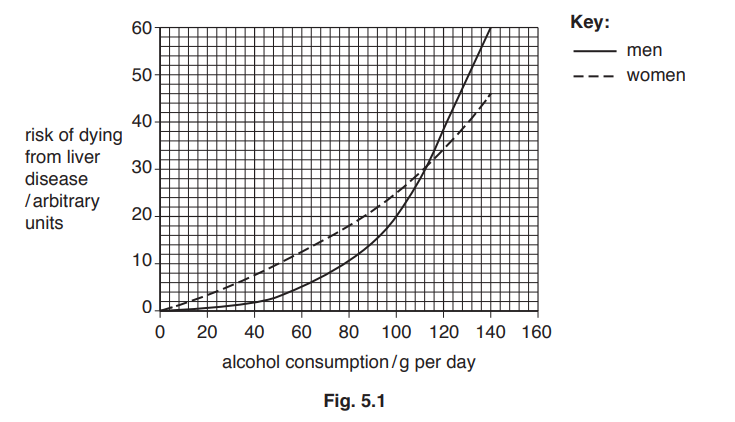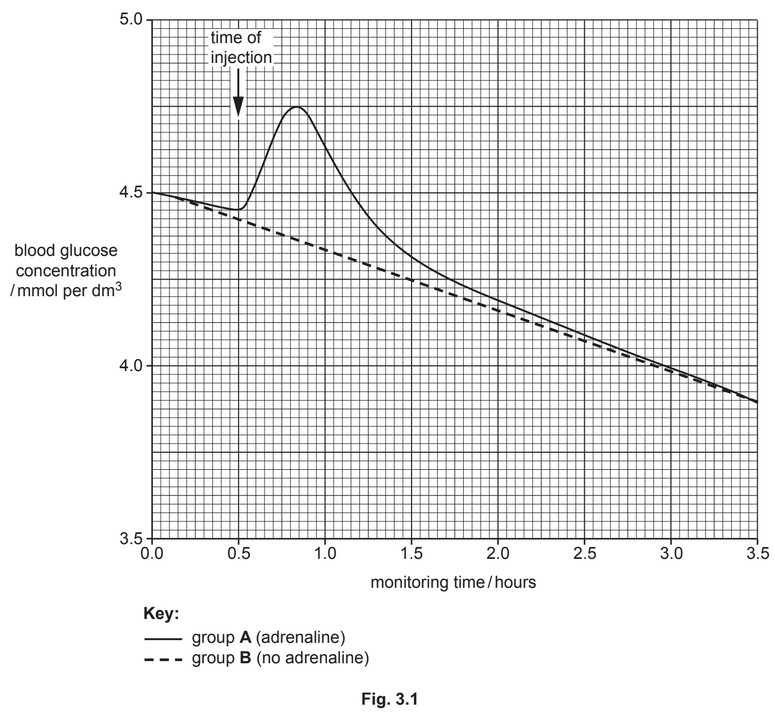Question
The liver is an important organ in many processes.
(a) The liver responds to changes in insulin concentration.
Insulin is a hormone.
(i) Define the term hormone.
………………………………………………………………………………………………………………………….
………………………………………………………………………………………………………………………….
………………………………………………………………………………………………………………………….
………………………………………………………………………………………………………………………….
………………………………………………………………………………………………………………………….
………………………………………………………………………………………………………………………….
………………………………………………………………………………………………………………………[3]
(ii) Describe how the liver responds to an increase in insulin concentration.
………………………………………………………………………………………………………………………….
………………………………………………………………………………………………………………………….
………………………………………………………………………………………………………………………….
………………………………………………………………………………………………………………………….
………………………………………………………………………………………………………………………[2]
(b) The liver is also involved in the processing of amino acids.
(i) Describe how excess amino acids are broken down.
………………………………………………………………………………………………………………………….
………………………………………………………………………………………………………………………….
………………………………………………………………………………………………………………………[2]
(ii) State the name of the process that assembles amino acids to form proteins.
………………………………………………………………………………………………………………………[1]
(c) The liver is also involved in the processing of toxins.
(i) Lactic acid is an example of a toxin that is produced during vigorous exercise and
processed in the liver.
Describe how lactic acid is processed.
………………………………………………………………………………………………………………………….
………………………………………………………………………………………………………………………….
………………………………………………………………………………………………………………………[2]
(ii) Alcohol is another toxin that is processed in the liver.
The effect of alcohol consumption on the risk of dying from liver disease was investigated
in men and women.
The results are shown in Fig. 5.1.

Describe the results shown in Fig. 5.1.
………………………………………………………………………………………………………………………….
………………………………………………………………………………………………………………………….
………………………………………………………………………………………………………………………….
………………………………………………………………………………………………………………………….
………………………………………………………………………………………………………………………….
………………………………………………………………………………………………………………………….
………………………………………………………………………………………………………………………….
………………………………………………………………………………………………………………………….
………………………………………………………………………………………………………………………[4]
Answer/Explanation
Ans:


Question
(a) One of the characteristics of living organisms is sensitivity.
Define the term sensitivity.
(b) State the names of two sense organs.
1 ………………………………………………………………………………………………………………………………
2 ………………………………………………………………………………………………………………………………
(c) Scientists investigated the effect of adrenaline on blood glucose concentration in rats.
The rats were put into two groups:
• group A was given an injection of adrenaline
• group B was given an injection that did not contain adrenaline.
The blood glucose concentrations of the rats in both groups were monitored for three hours
after the injections.
The rats did not eat for 12 hours before the investigation or while they were being monitored.
The results are shown in Fig. 3.1.
(i) Suggest why group B was given an injection that did not contain adrenaline.
(ii) Describe and explain the results shown in Fig. 3.1 for group A.
(d) Another group of rats was given an injection that did not contain adrenaline.
These rats were given food after 2 hours of monitoring.
Predict the changes to blood glucose concentration in this group of rats.
Sketch a line to show your prediction on the graph in Fig. 3.1.
(e) Describe two effects of adrenaline on the body, other than a change in blood glucose
concentration.
1 ………………………………………………………………………………………………………………………………
2 ………………………………………………………………………………………………………………………………
Answer/Explanation
Answer:
(a) as the ability to detect or sense stimuli in the internal or external
environment ;
and to make appropriate responses ;
(b) eye and skin ;
AVP ;
(c) (i)
as a control / for a comparison / AW ;
to see if blood glucose (concentration) was affected by an injection ;
so there is no effect, on water potential / osmotic effect ;
(ii) (before the injection) blood glucose was decreasing ;
after the injection:
peaks at 4.75 mmol per dm3 ;
increase is immediate / steep (after injection of adrenaline) ;
less steep / gradual, decrease after peak ;
decreases below initial starting value / below 4.4 or 4.5 mmol per
dm3 / decreases to 3.9 mmol per dm3 ;
blood glucose increases
converts glycogen to glucose ;
in the liver ;
blood glucose decreases
glucose used in respiration ;
AVP ;; e.g. insulin causes blood glucose concentration to
decrease / glucagon causes the blood glucose concentration to
increase
(d) line sketched on the graph showing an increase ;
increase starts after 2 hours ;
(e) any two from:
widened / dilated pupils ;
increased, pulse / heart, rate ;
increased breathing rate ;
increased blood pressure ;
AVP ;;
